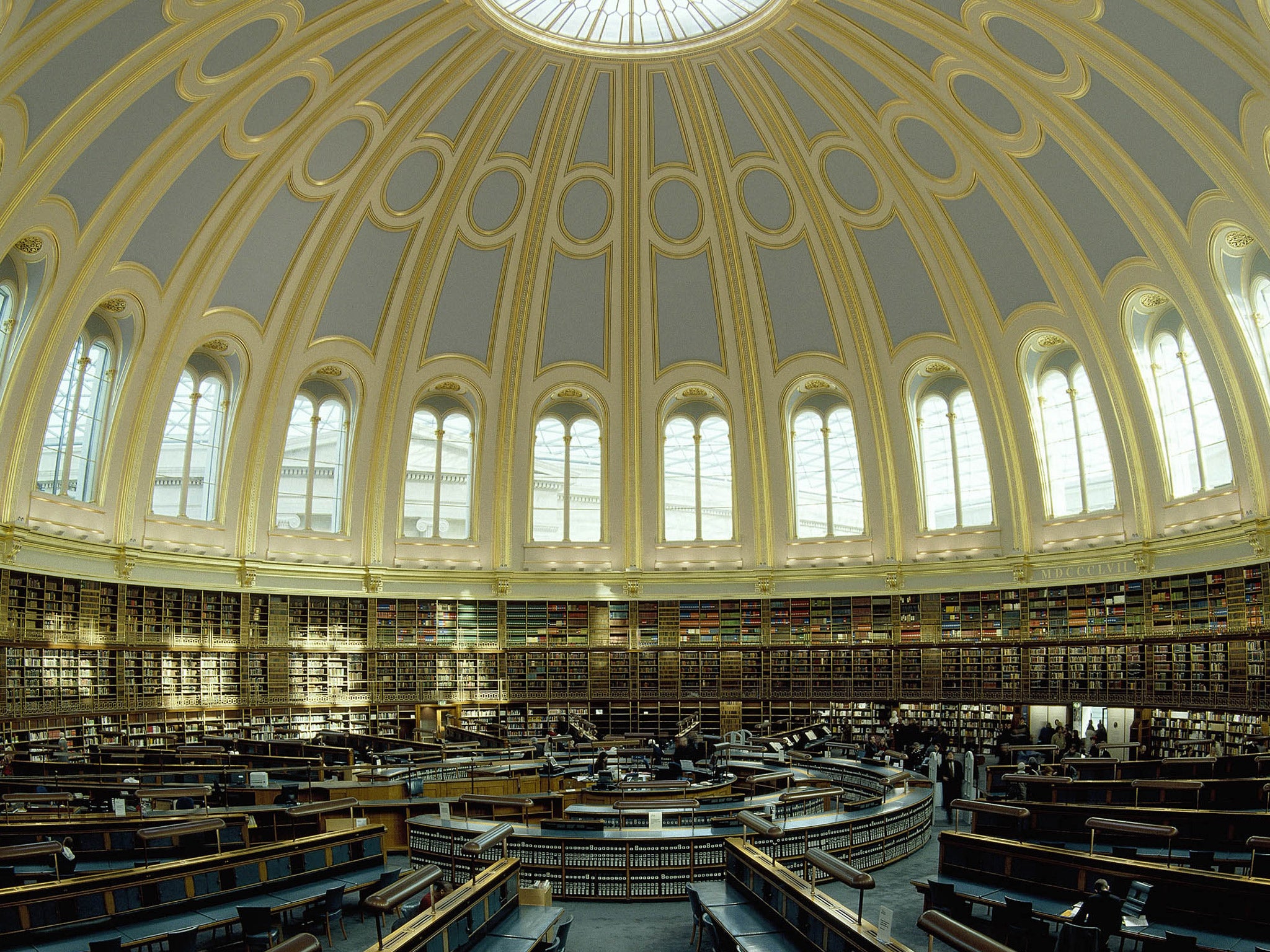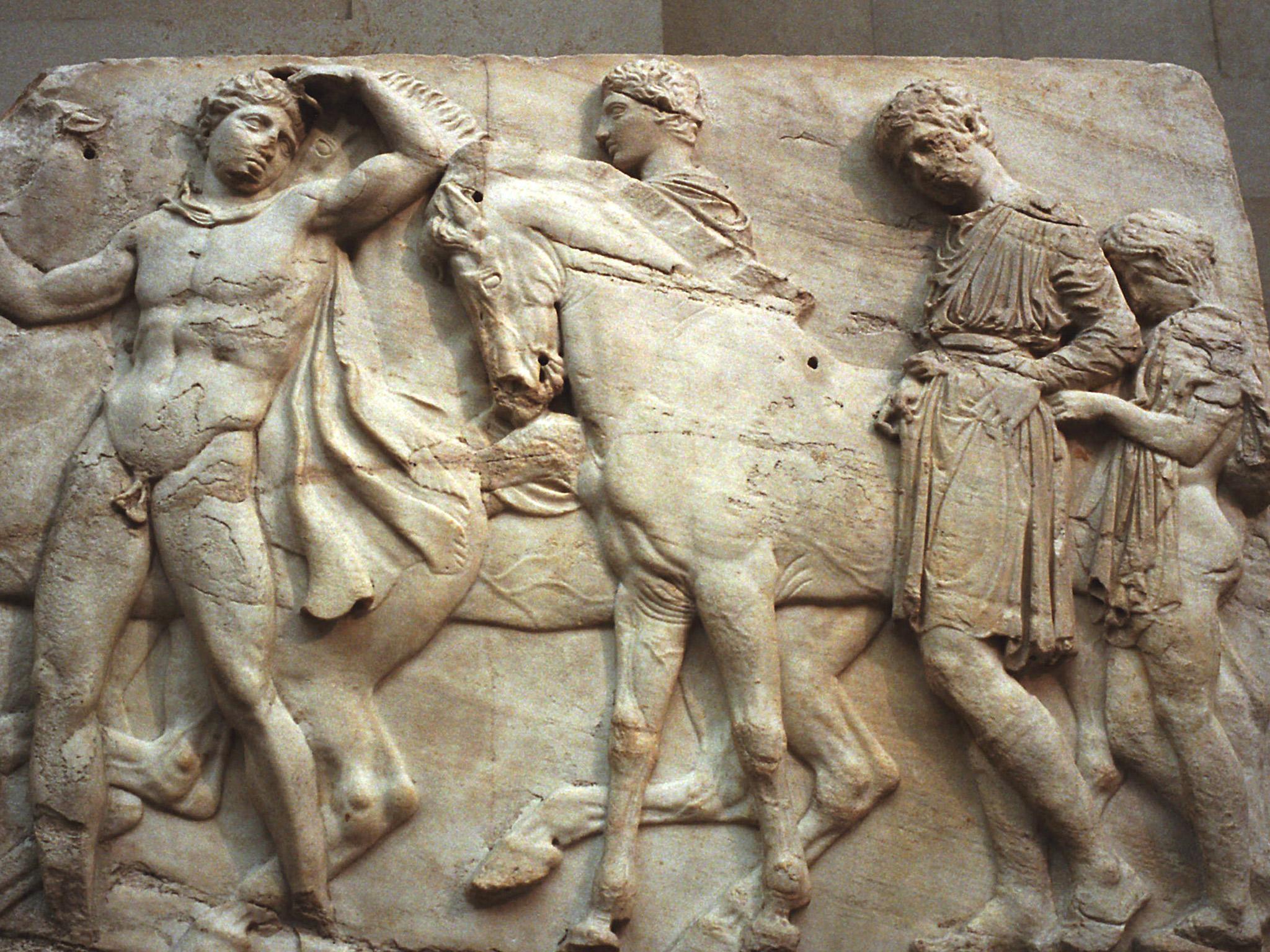Elgin Marbles on the move as British Museum ponders new Reading Room role

The Reading Room at the heart of the British Museum’s Great Court was hailed as one of Britain’s most majestic sights following its completion in 1857.
Now the institution is considering reinventing the majestic dome, with its famous benches extended outward like spokes in a wheel, as a space to display some of the most important artefacts marking civilisation’s development.
The Museum is considering new uses for the Reading Room, which opened to the public in 2000 after its restoration, including a permanent exhibition space which might showcase a “brief history of the world”, through a limited number of important pieces held in the Museum collection.
Neil MacGregor, British Museum director, said: “The Reading Room is currently completing restoration work and then we will consult widely about its future use. It is listed so we will need planning permission for any major works.”
The completion of the Museum’s new World Conservation and Exhibitions Centre this Summer means the Reading Room, which once granted user tickets to Karl Marx and Sir Arthur Conan Doyle, need no longer be used as a temporary home for special exhibitions.
Since its 2000 restoration, the vast dome has housed a modern information centre and a collection of 25,000 books, catalogues and other printed material, which focused on the world cultures represented in the Museum.
The Museum attracted a record 6.8 million visitors last year with successful exhibitions on the Vikings, housed in the new Sainsbury Exhibitions Centre as well as its Life and Death in Pompeii and Herculaneum collection, which was seen by 471,000 people.
Mr MacGregor is determined to bring wider public access to the treasures in the Museum’s permanent collection, which he called “our real blockbuster exhibition”.
A major exhibition examining the Greek body next Spring will include objects from the Museum’s extensive collection of Greek and Roman sculpture alongside key loans.
The sculptures will include some of the Elgin marbles which have not been separated since being housed in their current gallery in 1962.

“The museum houses the most important collection of sculpture in the world and we want to improve the display and to allow a greater dialogue between the sculptures of different cultures,” Mr MacGregor said.
But he said this was not a “use them or lose them” approach to the Parthenon sculptures, which were taken from Greece by Lord Elgin in the early 19th century and have been the subject of fierce argument between the countries over their return ever since. The museum regularly lends artefacts to Greece, Mr MacGregor added.
The public would have to pay to see some items, currently viewed for free in the permanent collection galleries, if they are moved for inclusion in the Greek body exhibition, Mr MacGregor said.
The new Sainsbury’s space will also house “Ming: the 50 years that changed China”, a major exhibition on the Ming dynasty featuring extensive loans from China, which the Museum hopes will also prove a crowd-puller.
With museums and galleries facing a real terms government funding cut of 30%, Niall Fitzgerald, the Museum’s outgoing chairman, warned that ongoing public support was vital. He said: “We have increased our income-generating activity but it’s predicated on baseline funding from government. The government must do its bit to back culture. It must not retreat from its role as a defender of the Arts.”
The British Museum, which now has 575,000 Facebook followers, was the world’s leading lender of objects last year with 5,000 objects travelling to 335 venues in the UK and internationally.
Join our commenting forum
Join thought-provoking conversations, follow other Independent readers and see their replies
Comments